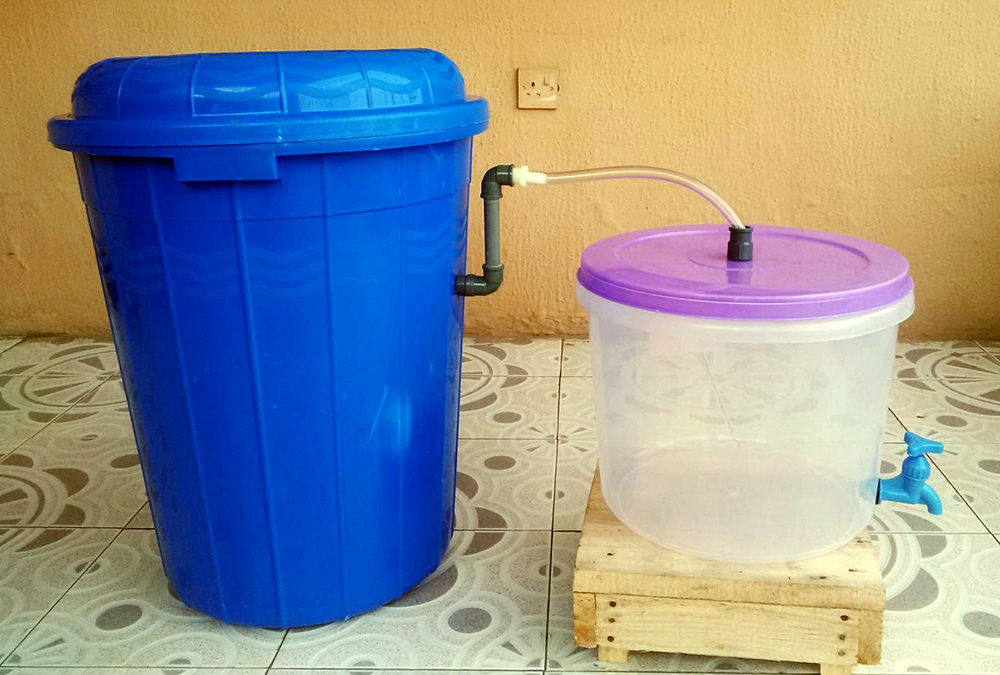Slow sand filters contain fine sand and usually function without chemical pre-treatment, such as chlorination or flocculation. Water passes slowly through the filter at a flow velocity of 0.1 to 0.2m/h downwards through a bed of fine sand (graded to coarse gravel at the bottom). A Biosand Filter (BSF) is an adaptation of the traditional slow sand filter, which has been used for community drinking water treatment for 200 years.
The Biosand filter is smaller (about 1 m tall, 0.3 m wide on each side) and adapted so that it does not flow continuously, making it suitable for use in people’s homes. The filter container can be made of concrete or plastic. It is filled with layers of specially selected and prepared sand and gravel. Water passes slowly through the filter downwards through a bed of fine sand (graded to coarse gravel at the bottom).
Pathogens are removed mainly in the very top layer of the filter bed where a biological film, called the ‘schmutzdecke’, builds up.In a well-designed and well-operated filter this film strains out bacteria. Deeper in the sand bed bacteria that pass through the schmutzdecke are killed by other micro-organisms or they become attached to particles of sand until they die
Schmutzdecke: This is a biologically active layer or bio-film in the top of the sand which creates an environment where most pathogens (disease-causing organisms) cannot survive. The micro-organisms in the bio-film consume pathogens as they are trapped in and on the sand surface; other filtration mechanisms support the quality improvement.
Efficiency: The biosand filter has been studied in the field and in labs. It has been shown to remove the following from contaminated water:
- Up to 100% of helminths (worms)
- Up to 100% of protozoa
- Up to 98.5% of bacteria
- 70-99% of viruses
- The filter can also remove up to 95% of turbidity (dirt and cloudiness), and up to 95% of iron.
The schmutzdecke takes time to be effective, so water needs to flow through a new filter for at least a week (on initial set-up 21 days is recommended) before it will work efficiently. The raw water should contain a fair amount of oxygen to promote useful biological activity in the schmutzdecke and further down the filter bed. For the filter to perform well there should be no sudden changes in the flow rate and the water should not be very turbid (cloudy with suspended solids).






